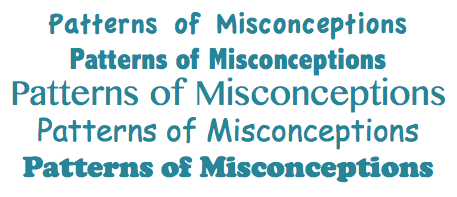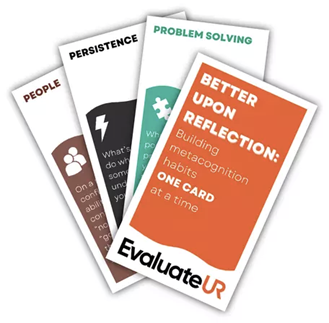by Dana Melone, Cedar Rapids Kennedy High School
We all want our students to study effectively. Many of our students fall into the trap of doing what they have always done. They do this for a lot of reasons. Maybe it has worked for them in the past and now suddenly their method is not working, maybe they were never taught how to study and assumed it must be intuitive, or maybe they have never needed to study in the past. The list can go on and on. As educators, we know that study habits are an important part of academic achievement.
I teach five sections of Advanced Placement Psychology with an average of about 150 students per school year. These students are sophomores, juniors, and seniors from a variety of different socioeconomic, racial and ethnic groups. My students also come in with a variety of experience in taking advanced courses and a variety of ranges of grade point averages. I talk with my students at the beginning of the school year about their study habits to determine whether I need to teach them study skills.
Here are just a few of the patterns of studying/learning misconceptions that I see:
|
Misconceptions |
|
After seeing these patterns year after year, I wanted to teach my students effective study methods and the use of metacognition in studying. I wanted the focus to be on continuous modeling of this in the course and honest discussions about how this can be used at home as a study tool. For the past few years I have been focusing on clearing up misconceptions about studying, and teaching students methods of retrieval practice, interleaving multiple areas of content, and spacing out their retrieval practice over time for better retention. This focus helps my students provide their own feedback on what they know and do not know.
Retrieval practice is defined as “A learning strategy where we focus on getting information out” (retrievalpractice.org). This means I am teaching my students to talk, write, and answer questions about the content without looking at the material while they are doing it. By focusing on on retrieval over time (spacing of learning), plus weaving in multiple topics from the course at a time (interleaving), I am helping my students become self sufficient in determining what they know and what they do not know about the content and its connection to other units in the course.
I incorporate these three high efficacy learning strategies in my classroom in multiple ways and encourage students to use similar techniques in their own studying. Here are a few examples:
- At the end of every unit I provide my students with an online questionnaire that sends them their results and results to me as well. This questionnaire poses questions asking them to state as much information about a current topic as they possibly can, to then connect that information to content from each of our previous units. They then reflect on what they remembered and how well they could connect it to other content areas. They are supposed to answer the questionnaire without referring to notes or text materials.
- I provide students with multiple questions from a chapter and have them answer them in as much detail as they can without looking at their notes. They then change ink color and use books and notes answer what they could not originally answer on their own. This exercise provides them with a great visual of what they did and did not know for an entire unit. I call this a brain dump. This name is based off others I have seen in my professional networks. These can be used at any time in a unit, but I prefer to give these to students a week or so prior to an exam.
- Another activity similar to a brain dump is a single topic retrieval activity. I take a topic that is addressed over multiple content areas and have them write down as much content as they can without their books or notes by applying it to each area it has appeared in. They then switch ink colors and walk around the room to fill in their gaps. This often includes a prediction of how it might appear in future topics. I call this a retrieval practice challenge. This activity reminds students that we have discussed this topic before from a different viewpoint or lense and allows them to have some predictive discussion of a new lens.
My students have really responded to these methods but it has taken a lot of teaching and reteaching the method and the reasoning behind the use of the method. Many of them have started creating them for their other classes. I have seen a decrease in students asking me for fill in the blank study guides and an increase in students asking me for tips on how to use retrieval practice to study a variety of topics. My plan moving forward is to show students correlation data from their exams showing the relationship between retrieval practice and test scores.




